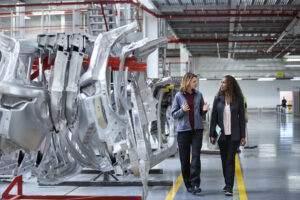
Researchers develop solvent-free technique for plastic production that could reduce manufacturing costs
Canadian Plastics
Automotive Materials Packaging Plastics Processes Research & DevelopmentA team at Purdue University has developed a new way for manufacturers to mix polymers and nanocellulose in order to save material and production steps when using plant-based materials in auto part and food packaging molding.
Researchers at Purdue University, in West Lafayette, Indiana, have developed a new way for manufacturers to mix polymers and nanocellulose, which could reduce manufacturing costs for vehicles part and food packaging by minimizing the use of solvents.
Nanocellulose is a green nanomaterial derived from natural sources such as plant matter, and normally requires solvents or other dispersants to be added to the mixture to improve the material’s dispersion in polymers. The downsides? “These methods can be very expensive for manufacturers, who must add additional processes and machinery to comply with emission standards that may be impacted by the use of the solvents,” said Jeffrey Youngblood, a professor of materials engineering in Purdue’s College of Engineering.

The new technique for adding nanocellulose to polymers that minimizes the use of solvents could provide a simpler, more cost-effective method for using plant-based materials in applications including automotive. Photo Credit: Purdue University
The team at Purdue created a method that involves mixing the nanocellulose in additives for the polymer material, such as plasticizer, and then compounding that mixture into the polymer instead of directly mixing them. According to the team, this technique could be applicable to a wide variety of polymers, including nylons used in the automotive industry and polylactic acid and ethylene vinyl alcohol copolymer used in food packaging by enabling nanocellulose to be easily extruded or injection molded into useful products with better properties that are more sustainable.
“We created a way to use the additives that are normally in polymers as the ‘solvent’ to disperse the nanocellulose during melt processing,” Youngblood said. “In this way, you still have increased properties, but without the pieces of the manufacturing process that require additional emissions-lowering components. This makes the process of using the nanocellulose, which is biodegradable, more sustainable as well.”
According to Youngblood, the main advantages to the Purdue technique for large-scale polymer production are solvent-free compounding of nanocellulose into polymers and homogenous mixture of hydrophilic nanocellulose and hydrophobic polymer.
The innovators have worked with the Purdue Research Foundation Office of Technology Commercialization to patent the technology, and are currently looking for additional partners and those interested in licensing the technology.
Source: Purdue University
